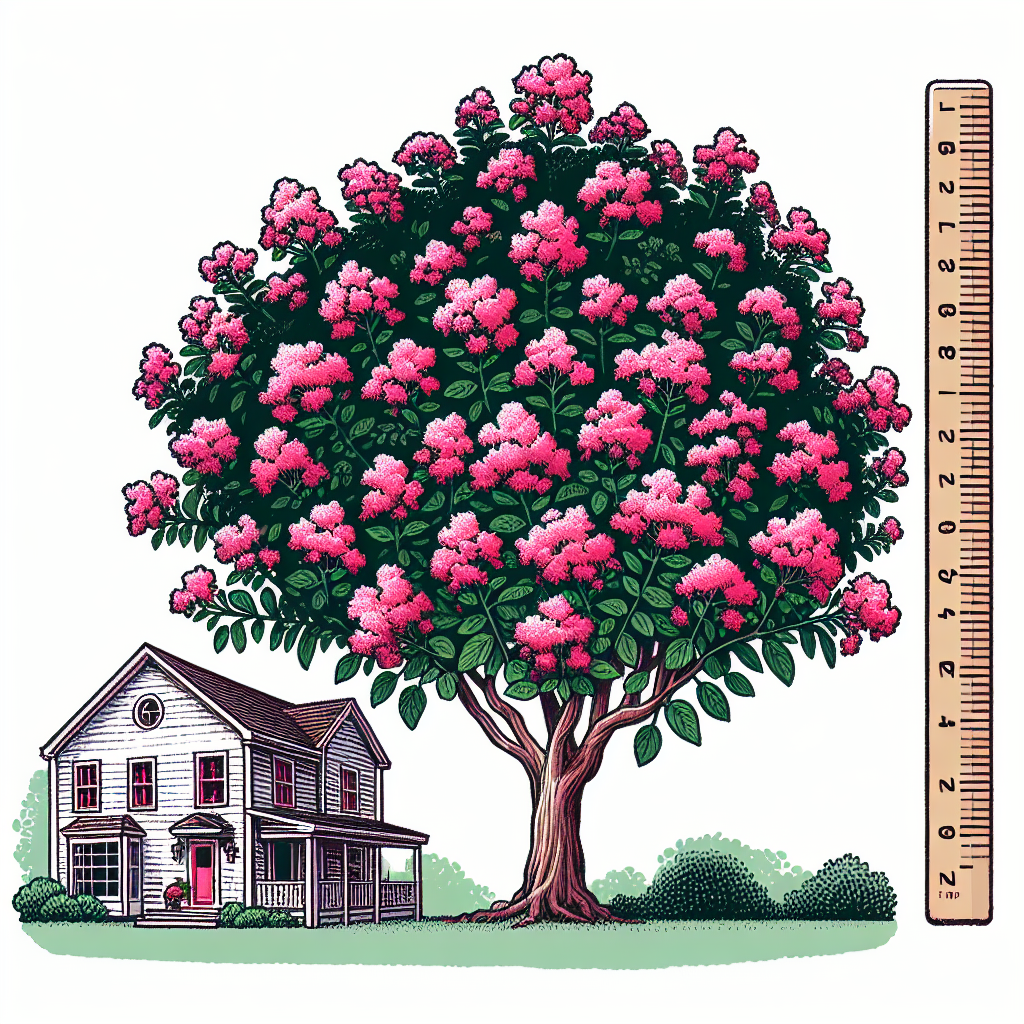
How big do crepe myrtles get
Understanding Crepe Myrtles: A Comprehensive Guide
Crepe myrtles (Lagerstroemia) are beloved ornamental trees and shrubs noted for their stunning summer flowers and attractive bark. Often seen in residential landscapes and public parks, they add a touch of elegance and vibrancy to any environment. However, one question frequently arises among gardeners and landscaping enthusiasts: how big do crepe myrtles get? In this article, we will explore this question in depth, providing you with valuable information on the size, growth patterns, and care of crepe myrtles.
What Are Crepe Myrtles?
Crepe myrtles are deciduous trees and shrubs native to Southeast Asia and are widely cultivated in the United States, particularly in the southern regions. They are appreciated for their long-lasting flowers, which can range in color from white to deep purple, as well as their attractive, peeling bark that adds visual interest even in winter. Crepe myrtles generally bloom from mid-summer to early fall, providing a beautiful show when many other plants have stopped flowering.
Growth Habits and Size of Crepe Myrtles
When discussing how big do crepe myrtles get, it's essential first to understand their growth habits. The size of these beautiful plants can vary significantly based on the variety, environmental factors, and maintenance practices.
Size Ranges of Crepe Myrtles
Crepe myrtles can range from small shrubs to medium-sized trees, with different varieties displaying different maximum heights. Here is a breakdown of the growth size based on typical classifications:
- Dwarf Varieties: Approximately 3 to 5 feet tall.
- Medium Varieties: Usually reach about 10 to 15 feet.
- Tall Varieties: Can grow up to 20 feet or more.
Selecting the Right Variety for Your Space
When choosing a crepe myrtle, consider the available space in your garden. Selecting the right variety for your landscape can ensure healthy growth without overcrowding or excessive pruning.
| Variety | Approximate Height | Flower Color |
|---|---|---|
| Natchez | 20-30 feet | White |
| Muskogee | 15-25 feet | Lavender |
| Great Southern White | 10-15 feet | White |
| Pink Velour | 8-12 feet | Pink |
| Crapemyrtle (Dwarf) | 3-5 feet | Varied |
Factors Influencing Growth
Understanding the various factors that influence growth can help gardeners provide the ideal conditions for crepe myrtles to thrive. Here are some key considerations:
Soil Conditions
Crepe myrtles prefer well-draining soil rich in organic matter. While they can tolerate a range of soil types, including clay and sandy soils, ensure good drainage to avoid root rot.
Sunlight Requirements
These plants flourish in full sun, requiring at least six hours of direct sunlight daily. Insufficient light can impact their growth and flowering.
Watering Practices
Regular watering is crucial, especially during the first year of establishment. Once established, crepe myrtles are relatively drought tolerant but benefit from occasional deep watering during dry spells.
Fertilization
Applying a balanced slow-release fertilizer in early spring can promote optimal growth. Avoid over-fertilizing, as this can lead to excessive foliage growth at the expense of flowering.
Pruning for Size Management
When considering how big do crepe myrtles get, proper pruning is essential for controlling their size and shape. Proper maintenance not only enhances their appearance but also encourages healthy growth. Here’s how to effectively prune crepe myrtles:
When to Prune
The best time to prune crepe myrtles is during late winter or early spring before new growth begins. Pruning at this time minimizes stress and maximizes flowering potential.
How to Prune
- Remove dead or damaged branches: Start by cutting away any broken or unhealthy wood.
- Thin out crowded branches: Remove crossing branches to improve air circulation.
- Shape the plant: Trim the tips of stems to encourage branching and maintain size.
Common Misconceptions
Several myths surrounding crepe myrtles can lead to confusion for budding gardeners. One prevalent misunderstanding is the idea that they require heavy pruning to maintain their size, often referred to as the “crepe murder” practice. This type of extreme pruning can lead to stunted growth and reduced flowering. Instead, focus on gentle, strategic pruning to achieve a more natural, healthy appearance.
Conclusion: Embrace the Beauty of Crepe Myrtles
In summary, how big do crepe myrtles get varies greatly depending on the variety, environmental conditions, and gardening practices. By selecting the appropriate variety and creating a conducive growing environment, you can enjoy the stunning beauty and vibrant colors of these magnificent plants throughout the summer months. Embrace the versatility of crepe myrtles, and let them transform your landscape into a vibrant canvas of colors and textures.
Whether you choose a compact dwarf variety or a grand tree-sized specimen, the key is understanding their growth habits and providing them with the right care and conditions. With the information provided in this article, you're now equipped to make informed decisions about incorporating crepe myrtles into your gardening plans.
By Guest, Published on September 24th, 2024